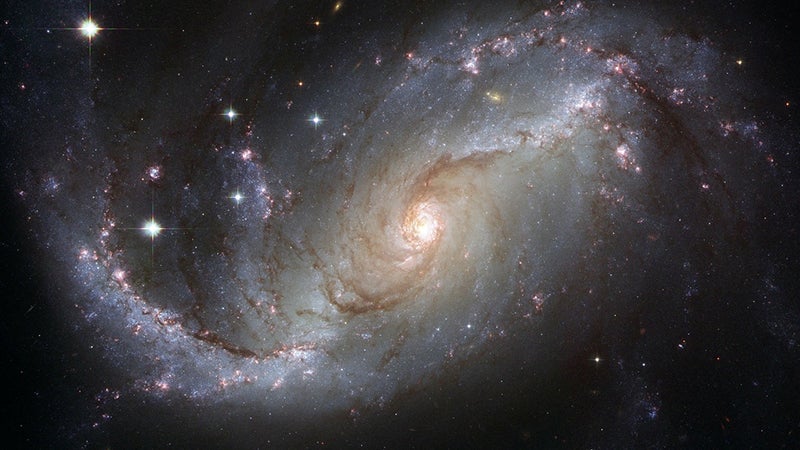
Cosmic Microwave Background (CMB) tagged posts


Using known distances of 50 galaxies from Earth to refine calculations in Hubble’s constant, a research team led by a University of Oregon astronomer estimates the age of the universe at 12.6 billion years.
Approaches to date the Big Bang, which gave birth to the universe, rely on mathematics and computational modeling, using distance estimates of the oldest stars, the behavior of galaxies and the rate of the universe’s expansion. The idea is to compute how long it would take all objects to return to the beginning.
A key calculation for dating is the Hubble’s constant, named after Edwin Hubble who first calculated the universe’s expansion rate in 1929...
Read More
Scientists have used the tiny distortions imprinted on the cosmic microwave background by the gravity of matter throughout the universe, recorded by ESA’s Planck satellite, to uncover the connection between the luminosity of quasars – the bright cores of active galaxies – and the mass of the much larger ‘halos’ of dark matter in which they sit. The result is an important confirmation for our understanding of how galaxies evolve across cosmic history.
Most galaxies in the universe are known to host supermassive black holes, with masses of millions to billions of times the Sun’s mass, at their cores...
Read More
HaloSat, a new CubeSat mission to study the halo of hot gas surrounding the MilkyWay, was released from the International Space Station over Australia on July 13. Credit: NanoRacks/NASA
A new mission called HaloSat will help scientists search for the universe’s missing matter by studying X-rays from hot gas surrounding the Milky Way galaxy. Astronomers keep coming up short when they survey “normal” matter, the material that makes up galaxies, stars and planets. A new NASA-sponsored CubeSat mission called HaloSat, deployed from the International Space Station on July 13, will help scientists search for the universe’s missing matter by studying X-rays from hot gas surrounding our Milky Way galaxy.
The cosmic microwave background (CMB) is the oldest light in the universe, radiation from when ...
Read More






Recent Comments